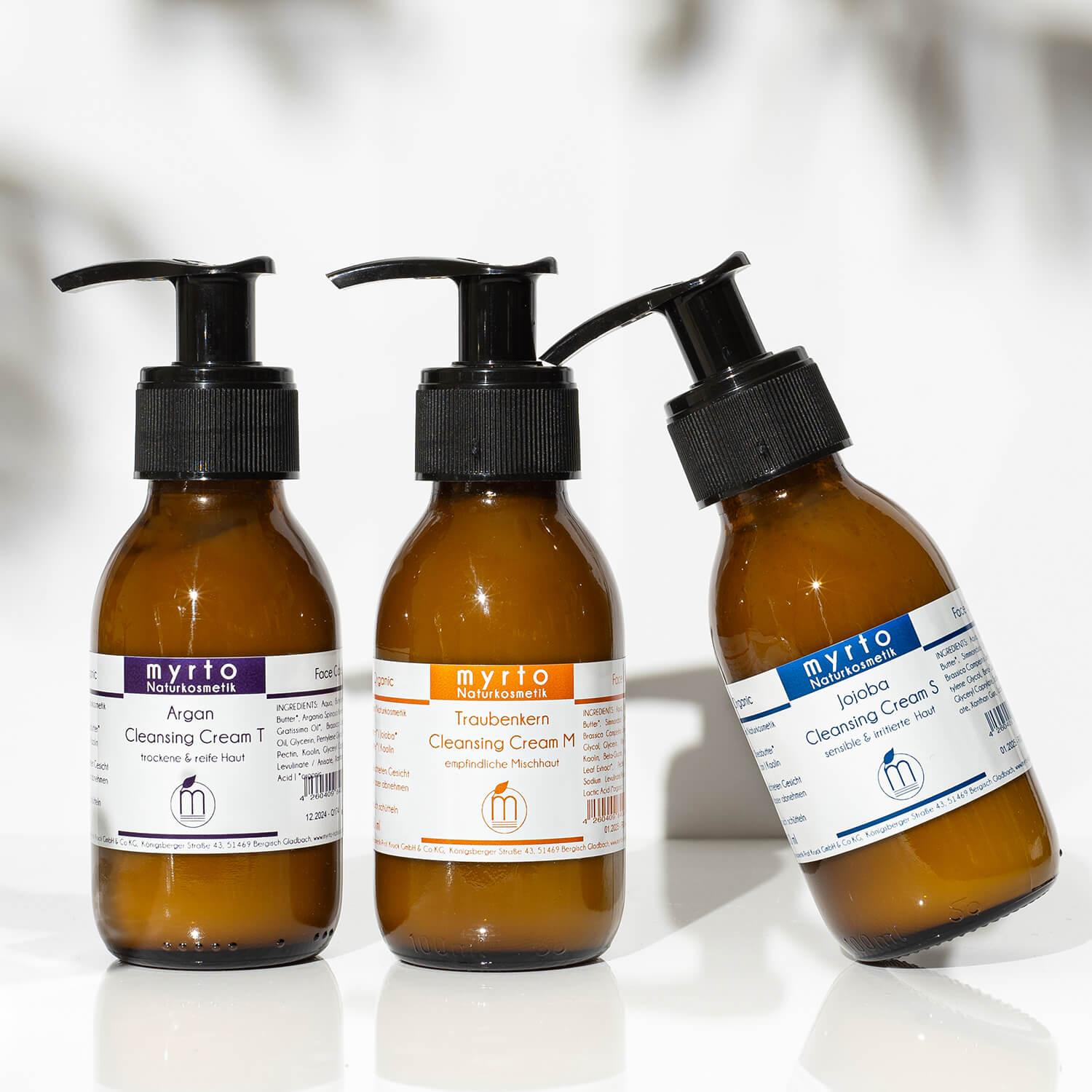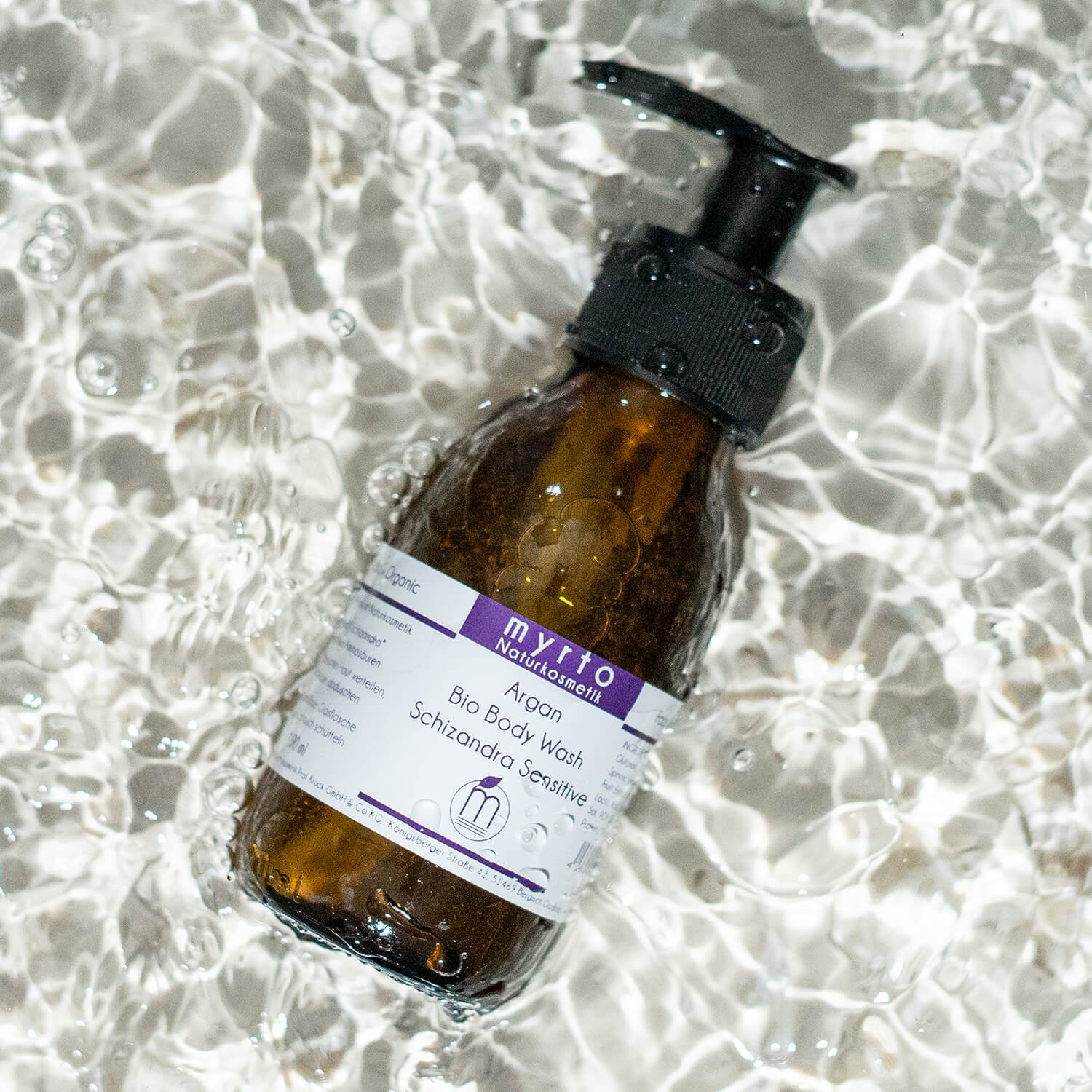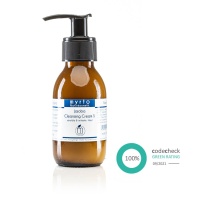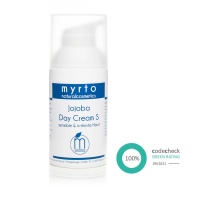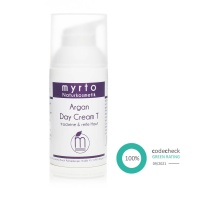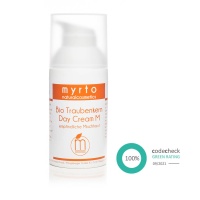What is keratosis pilaris?
Keratosis pilaris — medically as well known as hyperkeratosis - occurs for the first time primarily in adolescents and young adults. This relatively harmless skin disorder is not contagious. As a cosmetic problem, keratosis pilaris however is an annoying “flaw” for those affected who may suffer greatly from it. Keratosis pilaris usually disappears with the right skin care - even if it is considered incurable.
Identify keratosis pilaris
Keratosis pilaris is a keratinization skin disorder that is like “permanent goosebumps”. It is characterized by pimple-like, small reddish or white rough bumps on the skin.
The small, rough bumps are usually found on the outside of the upper arms, on the front of the thighs, on the bottom or sometimes in the cheek area on the face. Since the skin barrier is also disrupted in grater skin, the skin dries out and bacteria can penetrate more easily. There may be increased itching, irritation and inflammation of the skin.
Evolving & Causes of keratosis pilaris
Keratosis pilaris occurs when the skin produces excessive keratin. As a reminder: Keratin is the protein that makes up over 90% of our hair and nails. The thickening or keratinization of the outermost skin layer (stratum corneum) in keratosis pilaris primarily affects the hair follicles, which become clogged from the inside with keratin and then form emerging "permanent goosebumps.". The underlying causes of keratosis pilaris are not known, but the following factors seem to be relevant:
- damaged skin barrier: Persons with a damaged skin barrier and dry skin are more prone to hyperkeratosis.
- hereditary predisposition: Hyperkeratosis often runs in families.
- climatic factors: Cold and low humidity can worsen keratosis pilaris. The symptoms worsen in the winter months.
- concomitant diseases: Hyperkeratosis often occurs in combination with allergic diseases, eczema and dry skin.
Care tips for keratosis pilaris
There are many recommendations for the treatment of hyperkeratosis, although their effectiveness has not yet been sufficiently proven. Here are our tips on how you can gently smooth keratosis pilaris skin yourself and reduce excessive "goosebumps" with the right care.
- The right facial cleansing
For keratosis pilaris, gentle cleansing is essential, for example with the myrto cleansing creams. These skin-soothing cleansers act ultra-gently with white mineral clay - without surfactants. Our organic cleansing creams have a light peeling effect without attacking the skin barrier. The myrto cleansing creams are free from surfactants, fragrances or alcohol.
- The right body wash
In addition to a gentle body wash with a mild, perfume-free shower gel, you better only shower lukewarm and avoid hot water, as this will damage your skin barrier and further dries out. The 3 different myrto organic shower gels contain neither synthetic preservatives such as parabens, alcohol or other skin-irritating additives. Our Body Wash Schizandra Sensitive is fragrance-free and therefore ideal for hypersensitive skin.
-
Moisturizing creams and serums:
At myrto we use beta-glucan, hyaluronic acid and aloe vera juice as effective moisturizers. All myrto creams and serums have a skin-neutral, i.e. slightly acidic, pH value of 5.0 to 5.5. In doing so, they strengthen the skin's protective acid mantle.Products with urea are often recommended for keratosis pilaris in order to supply the skin with moisture. The problem: urea has no longterm effect and furthermore requires a basic pH value in a formulation in order not to break down and become ineffective. Products containing urea always need a basic pH value. In doing so, they destroy the protective acid mantle of the epidermis, which is an essential part of the skin's own immune defence system.
-
Strengthening the skin barrier through emulsifier-free DMS creams
A moisturizing, high-performance active ingredient in all myrto DMS face creams is hydrogenated phosphatidylcholine. Phosphatidylcholine from organic sunflower oil is used in every myrto face cream instead of the usual natural cosmetic emulsifiers made from esterified fatty acids. Phosphatodylcholine is a skin component of every human cell that is converted into ceramides in the skin. Phosphatodylcholine is completely metabolized in the skin. It is able to specifically repair the lipid-containing skin barrier in the damaged areas and thus sustainably prevent the skin from drying out.
-
Mechanical peelings
Salt or sugar particles, ground apricot kernels, almond bran or even coffee extract are suitable as mechanical peeling agents for a powerful body peeling. Ground oat flakes, jojoba beads, bamboo or rice powder, which are less abrasive, are gentler on the skin. They are massaged into damp skin, for example after showering. Mechanical peels help remove dead skin cells on the body and promote blood circulation.If used too frequently, however, mechanical peelings can put too much strain on the body's skin. They can damage the skin barrier, dry out the skin and promote inflammation. Mechanical peelings with abrasive peeling agents are not recommended for sensitive facial skin.
-
Peelings with fruit acids and salicylic acid
Peelings with fruit acids and salicylic acid are recommended for a gentle facial exfoliation. They are not massaged in, they just work before being removed with water. These peelings contain so-called alpha or beta hydroxy acids - called AHAs or BHAs for short. One of the mildest AHAs is lactic acid, which does not only act hydrating but is also suitable for a mild peeling effect. One of the comparatively stronger and deeper exfoliating BHA fruit acids is salicylic acid. Salicylic acid is particularly recommended for impure or combination skin in order to dissolve calluses and smooth the skin. AHAs and BHAs both accelerate the exfoliation of dead skin cells.Please note for application: Start with a low concentration of AHAs and BHAs to avoid irritating your skin. Do not use the comparatively gentler peelings with fruit acids or salicylic acid more than once or twice a week to protect your skin barrier and avoid irritation. If you have highly sensitive skin and suffer from rosacea, eczema or inflammation, you should better restrain from fruit acid peels to avoid further irritation and impairing healing.
Conclusion
By specifically treating keratosis pilaris with the right skin care and paying attention to its needs, you can effectively alleviate the annoying symptoms and make your skin softer, smoother and more supple.


